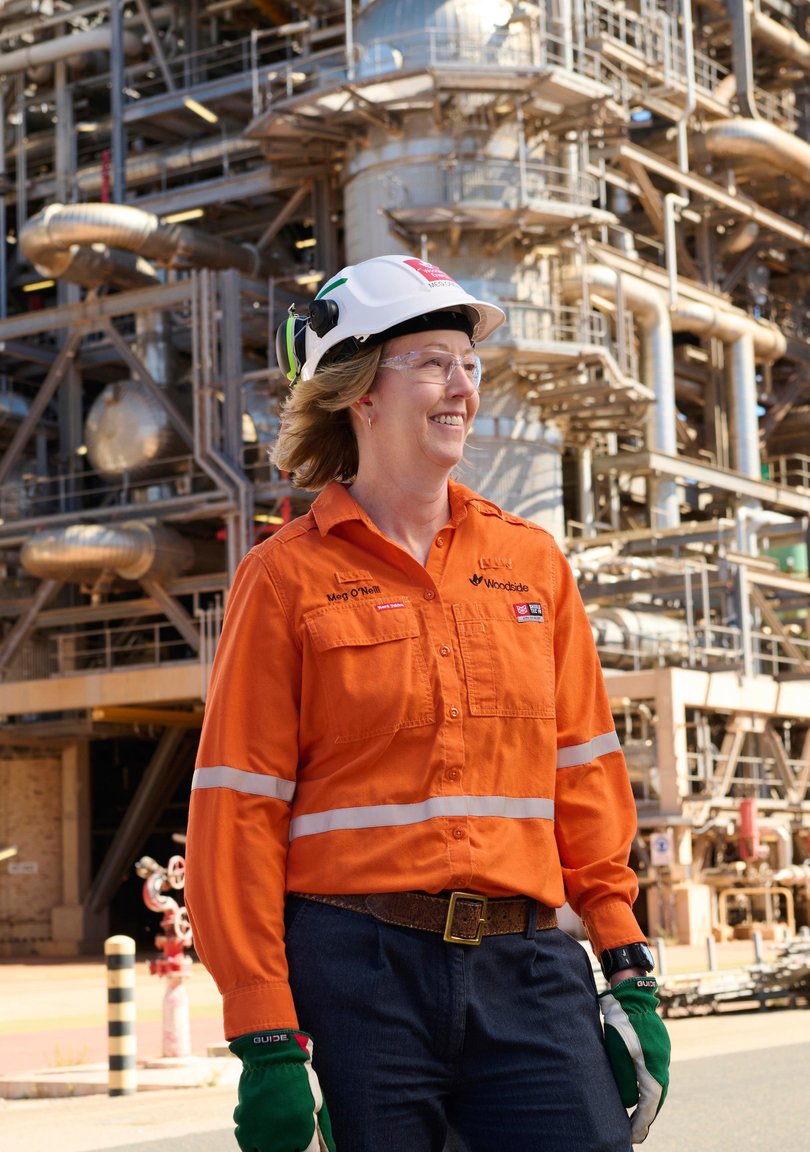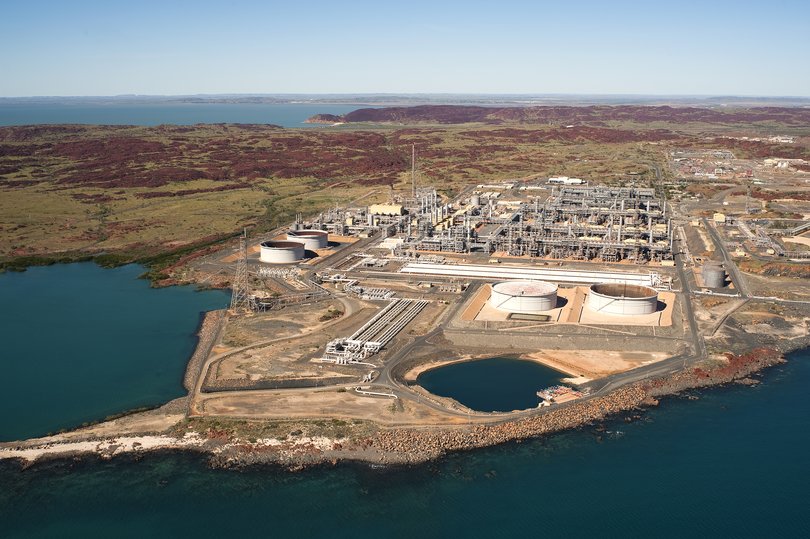BEN HARVEY: Many questions still unanswered on the North West Shelf project

Woodside Energy boss Meg O’Neill has a gas problem.
The whole of Australia is about find out how offensive it is.
It’s not that O’Neill has too much gas. And this isn’t an embarrassing “I hope nobody gets in this lift” kind of dilemma.
Sign up to The Nightly's newsletters.
Get the first look at the digital newspaper, curated daily stories and breaking headlines delivered to your inbox.
By continuing you agree to our Terms and Privacy Policy.It’s far more serious.
The six-year process of extending the life of the sprawling North West Shelf gas project almost broke everyone involved: Woodside, the environmentalists who fretted the carbon footprint, the Aboriginal activists who saw ancient rock art imperilled and the government bureaucrats who did the policy due diligence.
It ended with State and Federal politicians having to make a Sophie’s Choice between climate action and protecting Indigenous culture on the one hand and economic reality on the other.
Everyone involved will need a cup of tea and a lie down when Woodside finally responds to the Federal Government’s demands and a deal is inked to keep the facility going until 2070.

Don’t break out the Twinings just yet, for this is not the end.
It’s not, to parrot Winston Churchill, even the beginning of the end. At best, it’s the end of the beginning.
The big question now is, where will the gas come from? How does Woodside feed a beast which, at one point, was the biggest engineering project in the world?
The fields that currently sustain the NWS will keep the place humming until the late 2030s, albeit at ever-declining rates.
Woodside might be able to squeeze a few more years by tapping some neighbouring reservoirs over which it has rights but 2040 is going to be pretty close to a hard stop.
What then?
Browse, right?
Most analysts agree that Australia’s biggest undeveloped resource will eventually be developed (it will be a long time coming when it is; it was discovered in 1967) but there is no guarantee it will feed the NWS.
Respected energy analyst Saul Kavonic has for years argued that it is far more logical for Browse gas to be incorporated into the neighbouring Ichthys project run by Japanese energy giant INPEX.
That would see the gas processed at INPEX’s still-newish and very efficient LNG plant in Darwin. Kavonic says this would be an “elegant solution” to the Browse conundrum.
On paper it makes sense. The Ichthys field is 150 km from Browse — a long straw to blow through but a fraction of the 900km needed to connect Browse to the NWS.
To put 900km in perspective, it’s 10km longer than the underwater tube that connects INPEX’s assets off the Kimberley coast to Darwin — and that pipe set a world record when it was completed.
The competing costs of different pipeline routes isn’t the only thing that Woodside must consider. Browse has a sasquatch-sized ’s carbon footprint.
Woodside would need to plant another Amazon rain forest to offset the emissions so the carbon will need to be sequestered.
That technology is still hit and miss so you can bet London-to-a-brick that the company will put its handout for a taxpayer subsidy.
We could see a bidding war between the Northern Territory and WA governments.
Come to us and we will financially de-risk the sequestration process, the NT will say. We’ll JV it with you and tell the punters we’re pioneering new climate-saving technology.
Have we got a deal for you, the politicians in Perth will plead. Come to WA and we’ll fast track everything. We’ll give it major project status and bypass every inch of red tape. We’ll set fire to the Department of the Environment if we have to!
If the economics are overwhelmingly in favour of Darwin Woodside needs a plan B for the NWS. Plan B could be acreage over which Chevron has options and which Woodside has been eyeing off for some time.
That’s interesting because right now the Federal Government is toughening up its use-it-or-lose provisions.
Kavonic thinks at the very least this will give O’Neill the opportunity to pressure Chevron into supplying the NWS. The nuclear option would see the Feds strip Chevron of the fields it’s been banking.
Either eventuality would be bad news for Chevron, which needs those fields to backfill its Gorgon and Wheatstone processing facilities in the 2040s and 2050s.
The supermajor needs to rinse every last dollar from its $100 billion investment in those plants, so the bosses in California won’t go down without a fight.
And, as anyone who has watched Landman knows, the only creature more ferocious than an American oil executive is an American oil executive’s lawyer.

If poaching Chevron’s assets isn’t possible then Woodside has only two cards to play, one offshore and one on.
The Equus gas field, in waters 200km north of the Wheatstone project, seems a perfect solution. In 2022, Woodside struck a non-binding deal with owner Western Gas to produce and export three million tonnes of Equus gas as LNG through the NWS.
The non-binding part is the most important take-out from that deal because the economics of Equus make no sense to even the most bullish gas price forecaster.
The contract may as well have had the working title “In case of emergency break glass”.
The last option is the Perth Basin, where all roads lead to billionaires.
The Ryan Stokes-controlled Waitsia project is already exporting gas through a swap deal with Woodside. It is about to directly feed the NWS but under policy settings designed to shore up domestic supply is only allowed to tap international markets until 2030.
The Cook Government may need to extend that deadline when it comes to realise that domestic gas is a side hustle to the lucrative LNG trade but so far 2030 is set in stone.
The rest of the Perth basin is a wholly owned subsidiary of Gina Inc.
Rinehart has sprawling assets in the region but, so far, has shown little appetite to develop them.
Even if she did drill a few wells, it’s unlikely she could build a processing plant before 2030 and pipe the gas to the NWS for export.
Rinehart could avoid the deadline crunch by striking a tolling deal with Waitsia but there’s every chance she would turn her nose up at that option when she compares margins with the dizzyingly profitable Roy Hill iron ore mine.
Put all that in a blender and you have an economic, political, environmental and social smoothie that will play havoc with Meg O’Neill’s guts.
And given gas is critical to this country’s prosperity, we could all get indigestion.

